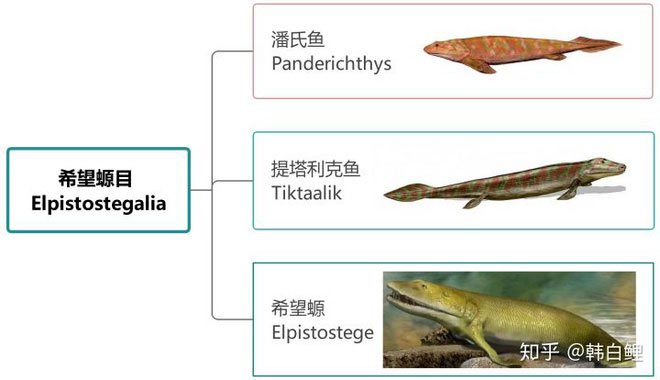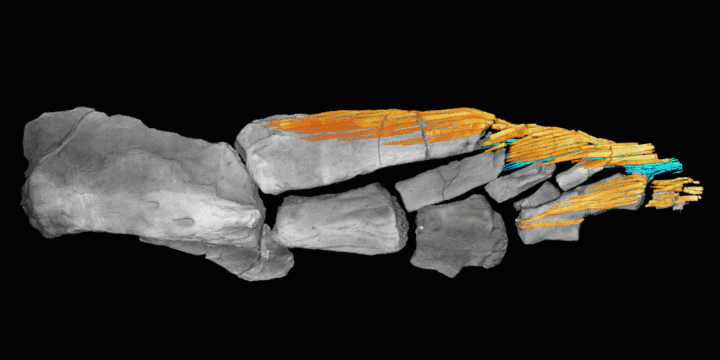Ancient fish revealed the mystery of the origin of the human finger
Why do we have fingers, what does the number of these fingers mean in terms of evolution?
The story begins in the Devonian period - about 380 million years ago. Earth in this period was considered the era of fish species, they dominate all oceans and fin fishes dominate freshwater basins.
Earth at the end of the Devonian period, the climate on our planet was very warm and dry. Ferns and gymnosperms form dense forests everywhere. Seed plants began to appear, and plants of the original genus Prototaxites as high as 8.8 meters covered the sky.
Insects present throughout the marshes and branches and leaves begin to shed much, causing the oxygen content in the water to drop and some fish in a short time to start moving to the nearshore tidal flats. to live on.
Also during this period, an important event happened in the evolutionary history of the Earth, aquatic animals began to change their habitats.
Water and land are two very different ecological environments, and they must have significant mutations in order to adapt to new habitats, on the other hand, to be able to live and move on land. The limbs that support the body and are still active now become very important organs.

Fish with prehistoric lobes.
Studies on the origin of genera depend a lot on a number of prehistoric lobe finfish that lived during the late Devonian period, mainly including Panderichthys, Tiktaalik and Elpistostegalia.

3D fossils of fish bones with lobes.
Among them, the topics of research on Tiktaalik are relatively diverse. However, those studies have yet to fully reveal the anatomical structure of the pectoral fins.
At the end of 2019, PNAS (Proceedings of the US National Academy of Sciences) published a study called "Fin ray patterns at the fin-to-limb transition" with the content explaining how it works. fin and change as they evolve into limbs.

Miguasha Region of Canada.
Elpistostege is the largest predator living in shallow water to the estuaries of Canada during the late Devonian. In 2010, a complete fossil of 1.57 meters of Elpistostege was discovered in the Miguasha region of Canada. On March 18, 2020, Nature published a research paper related to this fossil.
A team of paleontologists from Flinder University in Australia and the University of Quebec in Canada used CT scanning technology to restore the complete pectoral fins of the fossil. The results of the survey showed the presence of humerus (arm bone), radius and ulna (forearm bone), wrist bone and finger bones.
The discovery provides new insights into the origins and finger evolution of four-legged animals (including humans).

Anatomical structures of pectoral fins (a) and arm bones (b) of prehistoric lobed fish (Panderichthys, Tiktaalik and Elpistostegalia) and primitive quadruped animals (Tulerpeton).
The comparison in the figure above shows that during evolution from fish to 4-legged animals we can see that from left to right, the number and distance between the bones is constantly increasing to form the fingers. Typically, the pectoral fins of Elpistostege have begun to form the toe bones.
Therefore, a study in the journal Nature shows that the origin of vertebrates (hands) of vertebrates is the evolution of the bones in the pectoral fins of aquatic animals.
When the fish began to leave the water environment and moved their habitats to the tidal flats and the onshore activities and pressures of survival, onshore promoted the selection process to assist the body in new habitat. The number of small bones in the fins is also forced to increase and gradually evolve to form the finger bones.

The finger bone evolved in the fin.
This is the first time scientists have discovered such clear evolution instead of the previous conjecture. The finger bone evolved in the fins and these finger bones are very similar to the finger bones of most terrestrial animals today.
At the same time, it also shows that before the aquatic animals completely transformed into terrestrial habitats, the evolution of the finger took place quietly.

Before the aquatic animals turned to live on land, the evolution of the finger took place quietly.
Perhaps Elpistostege is not necessarily our human ancestor, but it is an animal in the transition between fish and amphibians, and this species shows us the most direct evidence of the process. evolution of today's four-legged four-finger animals.

There is also the Acanthostega, which is one of the first vertebrates to have easily recognized limbs. This species appeared in the late Devonian.
Anatomically, we can see the hybrid between lobe finfish and animals with full limbs to move on land. This species is only about 0.6 m long and until now has not found evidence to clearly indicate how many toes they have, but between the connected webbed fingers, and does not seem to adapt well to walk on land. .
The Acanthostega forelegs cannot bend forward at the elbows, and therefore cannot withstand the weight of the body, and seem more suitable for paddle swimming or for attachment to aquatic plants. Although Acanthostega has many fish-like characteristics, they have clearly developed legs and feet instead of fins. They also have fish-like gills and have developed lungs, but the ribs are too short to support the chest cavity out of the water.
It has been deduced that Acanthostega can live in shallow marshes rich with aquatic plants. Research based on the skull morphology analysis of Acanthostega indicates that this species may have hunted either at the water's edge or near the water's edge.
- The discovery of human finger bone fossils dates back to 1.84 million years
- Testosterone determines human fate
- Ancient DNA revealed the origin of the Philistines
- The famous mystery in history has been solved
- Human jaws evolved from ancient fish
- Decipher mystery: Is it true that cats like to eat fish?
- Evidence shows that humans evolved from fish
- Human feet and hands have evolved from ancient fish fins
- Fossils of 50 million years of the ancient fish herd nearly 300 children
- Revealing the mystery of the world's largest fish
- The ring finger reveals the richness of men
- 'God's finger'
 Discovered an ancient centipede fossil 99 million years old
Discovered an ancient centipede fossil 99 million years old Discovered bat-like dinosaurs in China
Discovered bat-like dinosaurs in China Discovered a 200-year-old bronze cannon of the coast
Discovered a 200-year-old bronze cannon of the coast Discover 305 million-year-old spider fossils
Discover 305 million-year-old spider fossils